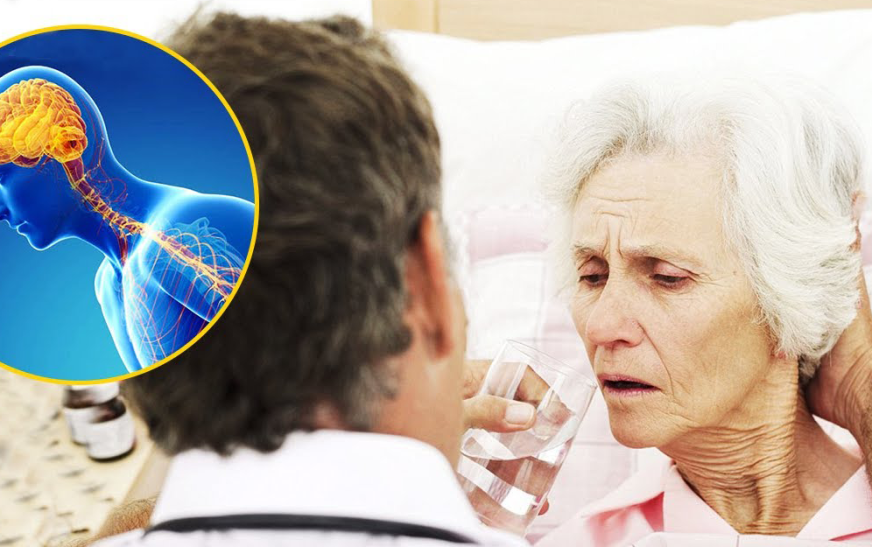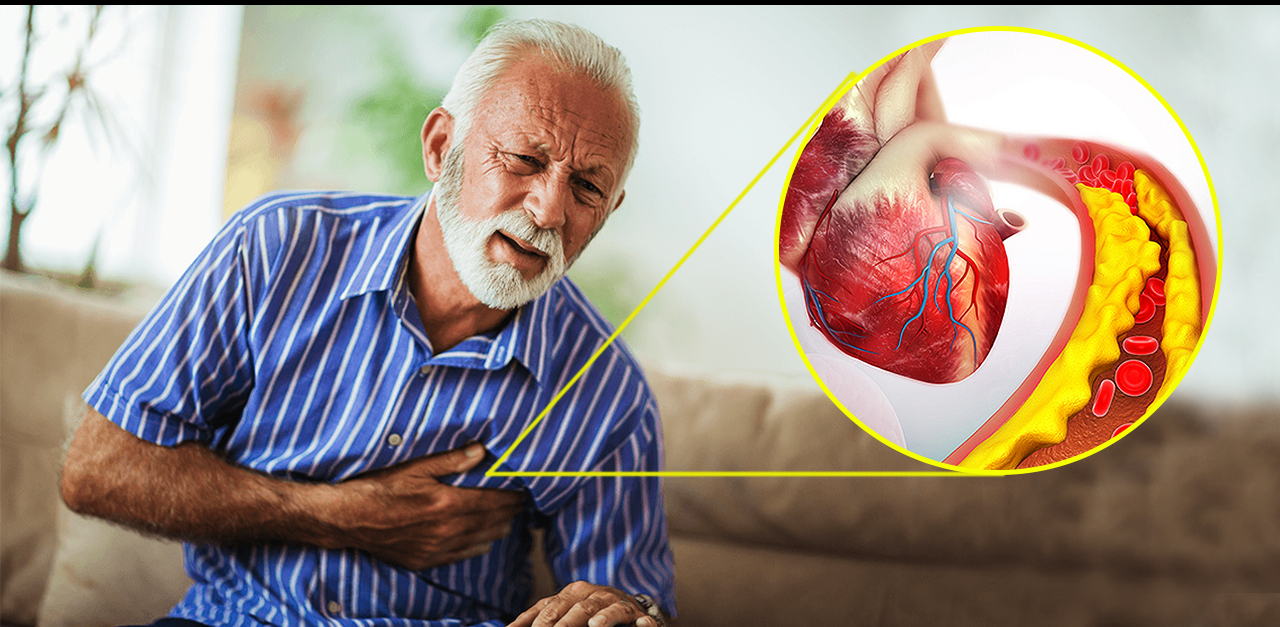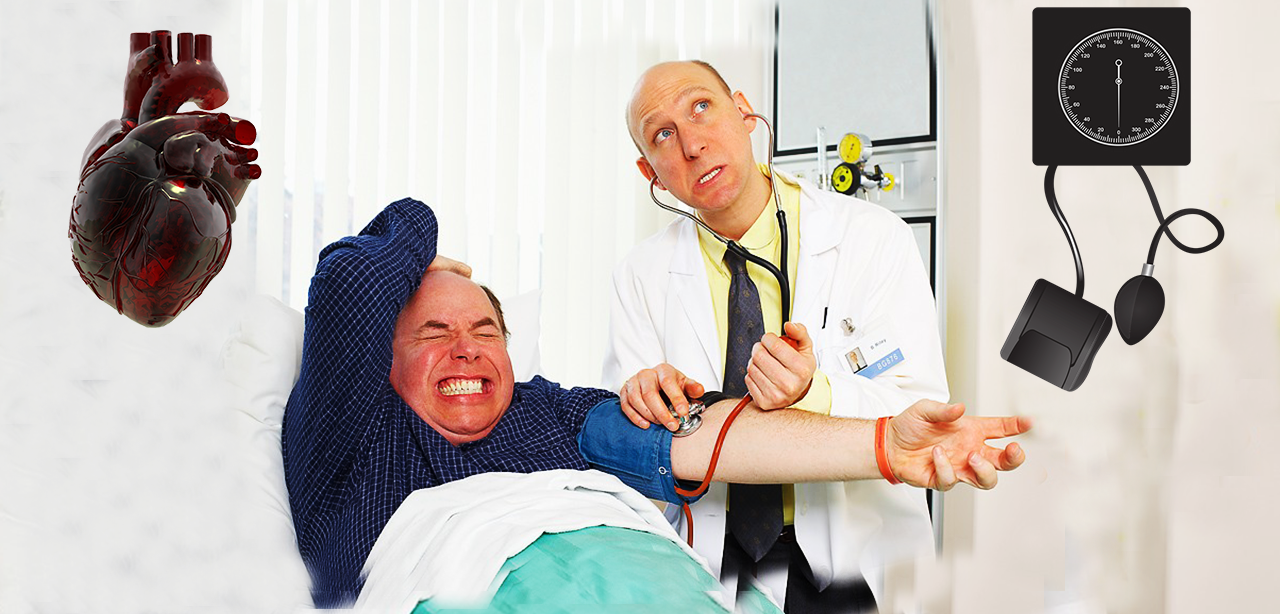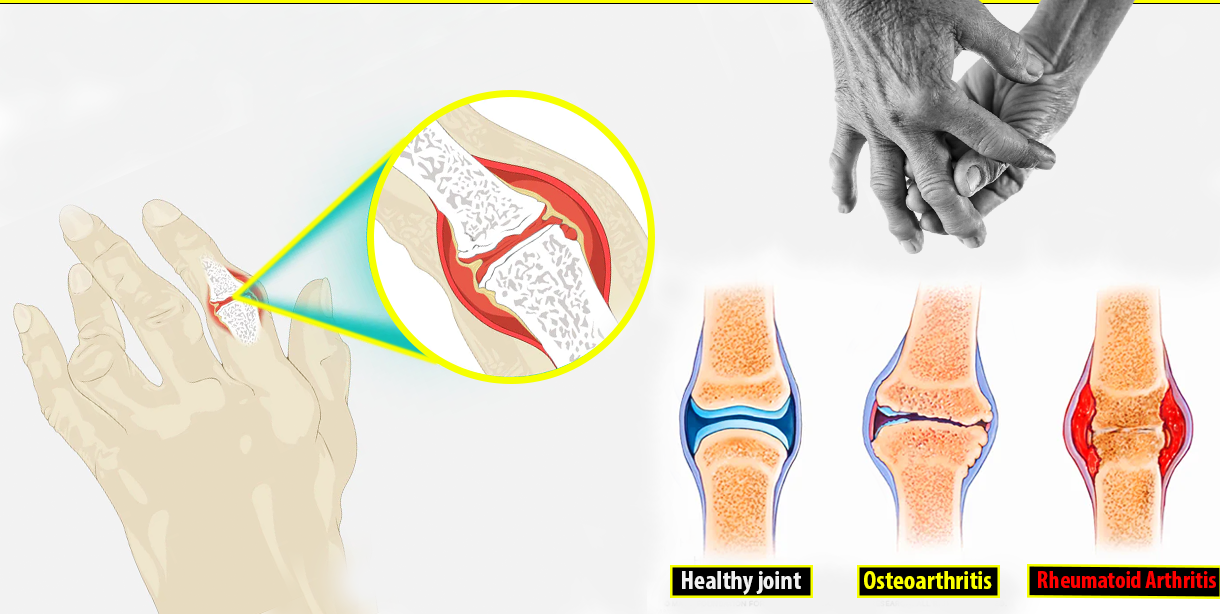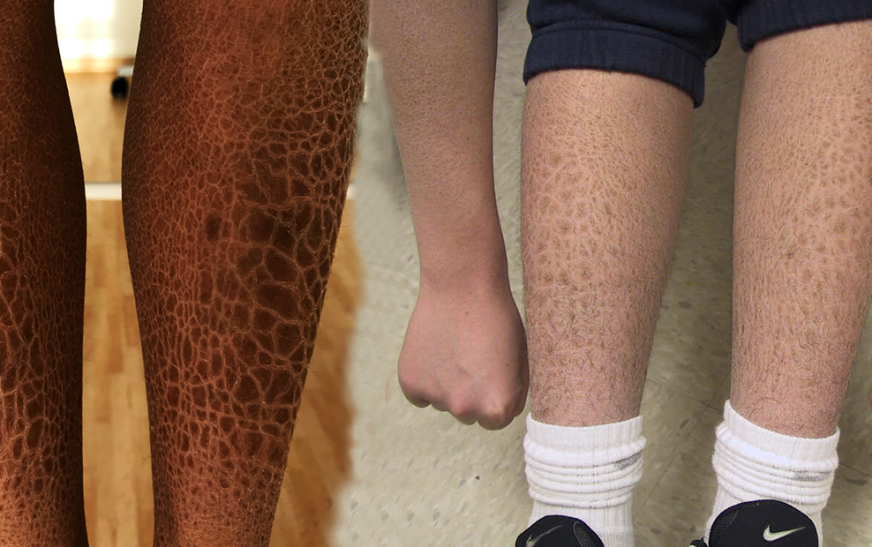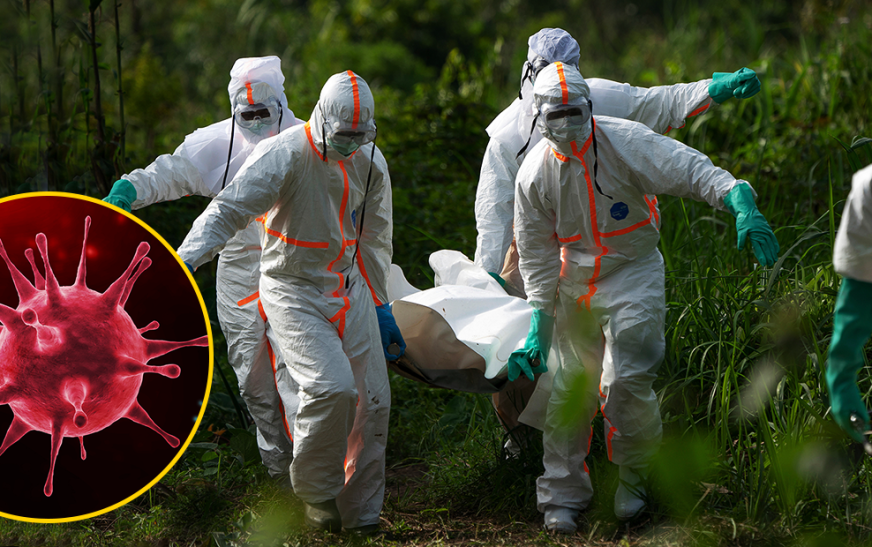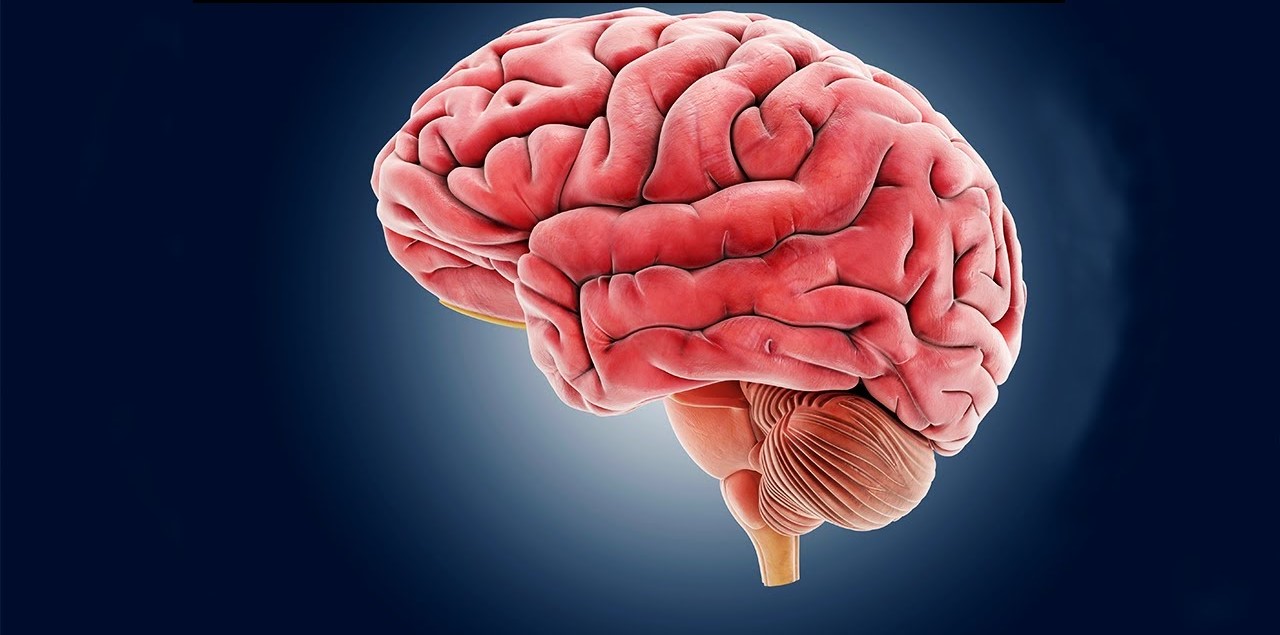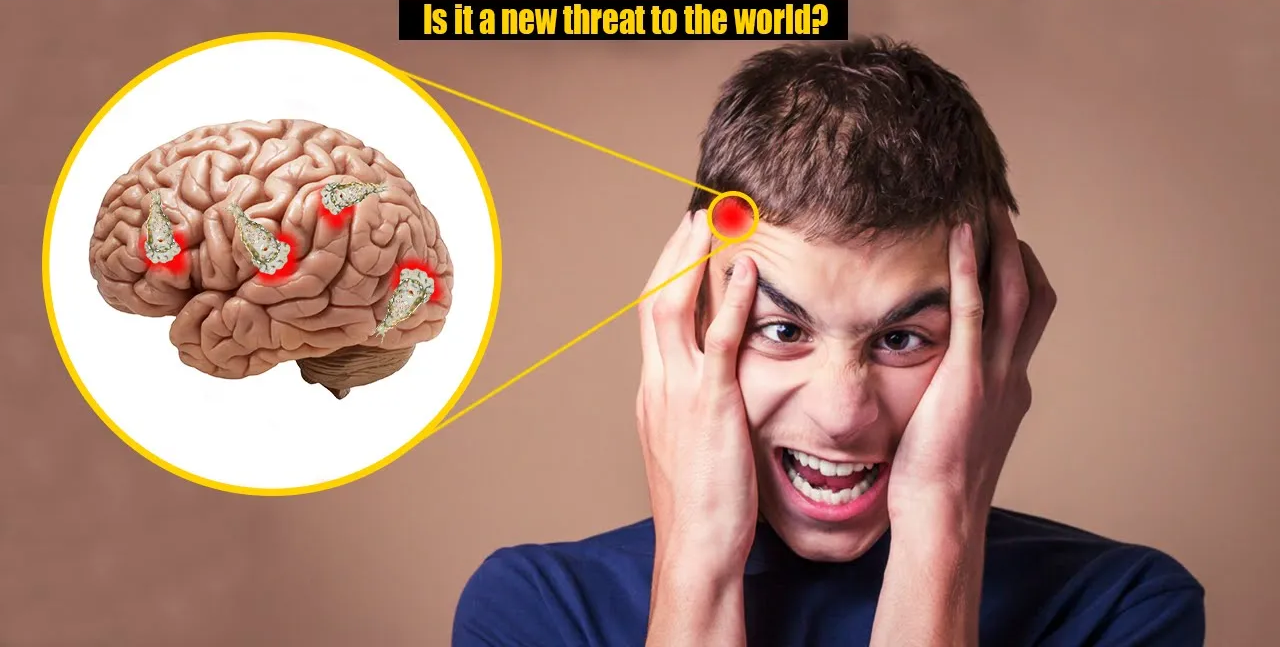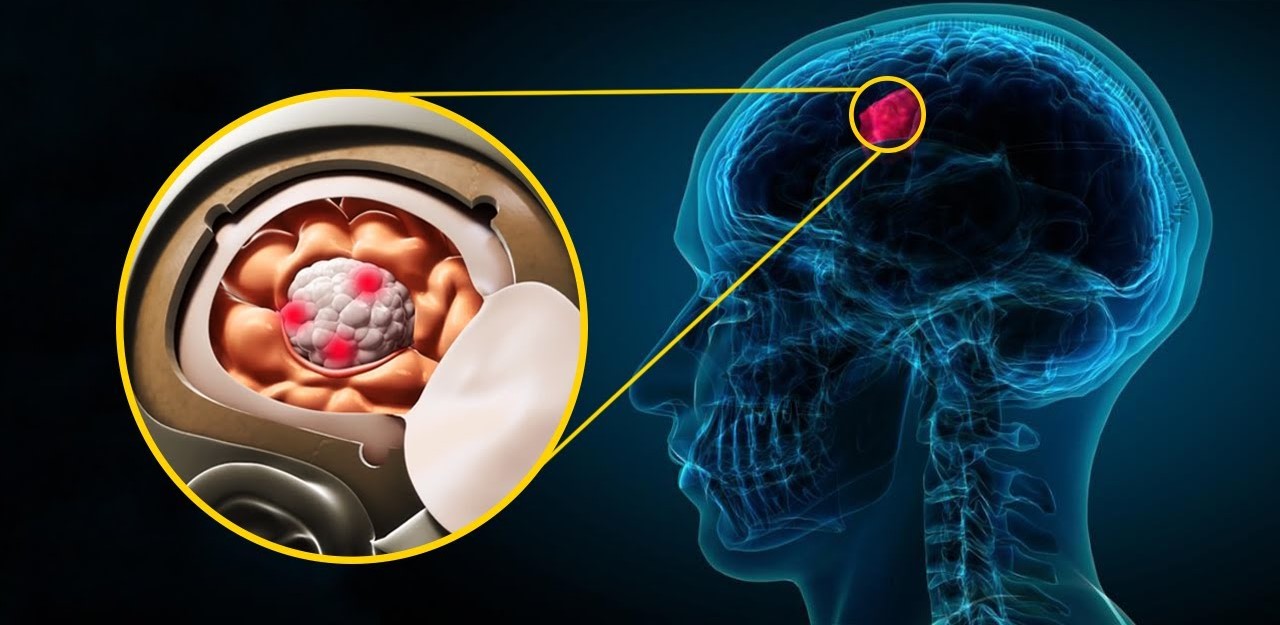There are a variety of neurotransmitters produced by the nervous system that control communication among all organs so that the body can move smoothly. In the realms of complex neurodegenerative diseases, Parkinson’s disease is an ailment that affects all age groups of people, whether elderly or children. Parkinson’s disease is one of those disorder that interferes with the production of a special neurotransmitter, leading to imbalance and uncontrolled movements. There are several genetic and environmental factors which lead to the development of Parkinson’s disease.
What is Parkinson’s disease?
Parkinson’s disease, often abbreviated as PD, is a chronic degenerative disease which affects the brain, causing uncontrolled body movements like shaking, tremors, and stiffness. It influences several motor and non-motor systems in the body. It is an age-related disorder, usually developing late at the age of 60 years, but sometimes it can occur in younger adults, particularly due to some environmental factors.

It is the most commonly occurring movement-related or motor disease among all brain diseases. There are numerous factors that lead to the development of this disorder; however, the exact cause is still under debate. Inheriting mutated genes or any environmental factor like exposure to pesticides or certain chemicals or any head injury can eventually lead to Parkinson’s disease.
How does Parkinson’s disease happen?
The brain is the command and control center for all the essential life processes and movements. Neurons are the basic functional units of the brain. Neurons, also called nerve cells, are responsible for transmitting signals from the brain to muscle cells, glands and vice versa. Neurons communicate with each other and with other cells through specialized signalling molecules referred to as neurotransmitters. Neurotransmitters are chemical signals of four major types and play a crucial role in normal body processes. These are dopamine, serotonin, glutamate, and acetylcholine. According to studies, a direct association has been found between dopamine and Parkinson’s disease. Fluctuating levels of dopamine or no dopamine in the brain is the main reason for Parkinson’s disease.
How do dopamine levels fluctuate?
- The basal ganglion in the brain is an important part that controls movement.
- The nerve cells or neurons in the basal ganglia produce dopamine neurotransmitters.
- This dopamine acts as a chemical messenger between neurons and muscle cells and is essential in coordinating body movements.
- However, in Parkinson’s disease, the nerve cells in the basal ganglia become dysfunctional, thereby ceasing the production of dopamine.
- The nerve cells of basal ganglia produce a protein, alpha-synuclein; this alpha-synuclein is responsible for controlling the release of dopamine from nerve cells.
- Due to a certain reason, this alpha-synuclein misfolds and loses its function.
- This impaired alpha-synuclein starts to accumulate in the nerve cells, forming an inclusion known as Lewy bodies.
- Lewy bodies are very dangerous because they cannot be destroyed by nerve cells.
- Hyper-accumulation of Lewy bodies causes nerve cell death in basal ganglia.
- Consequently, there will be no nerve cells, meaning that there will be no production of dopamine. All these mechanisms lead to uncontrolled body movements, referred to as Parkinson’s disease.
Norepinephrine is a neurotransmitter and hormone that plays an important role in “fight-or-flight” responses like excitement. Low levels of norepinephrine may be dangerous because they play a key role in the development of non-motor symptoms of PD. Sometimes, nor-epinephrine-producing nerve endings are damaged in PD, which leads to low levels of this hormone.
Types of Parkinson’s Disease
There are three major types of Parkinson’s disease, which include familial Parkinson’s disease, Induced Parkinson’s disease, and Idiopathic Parkinson’s disease.
Familial Parkinson’s Disease
Parkinson’s disease does not spread through direct contact; however, it can develop in a person if he has a family history of this illness. Inheriting Parkinson’s disease from either of the parents contributes to 10% of all PD cases. According to studies, there are several genes associated with PD; however, only three of them cause Parkinson’s disease at a young age.
Any mutation in those genes consequently leads to Parkinson’s disease. Mutations in genes such as PARK3, GIGYF2, HTRA2, EIF4G1, TMEM230, RIC3, VPS35, PRKN, PINK1, DJ-1, ATP13A2, PLA2G6, DNAJC6, SYNJ1, VPS13C, USP24, PARK12, and PARK16 have also been reported leading to Parkinson’s disease. Parkinson’s disease due to genetic causes is often termed as familial Parkinson’s disease.
Induced Parkinson’s Disease
Exposure to pesticides, certain medications, and head injuries are some of the non-inherited reasons that have also been reported to have a link with Parkinson’s disease. Similarly, exposure of an individual to trichloroethylene for a longer period of time is also reported to be associated with PD. Trichloroethylene is usually used in metal degreasing, dry cleaning, paint thinners and detergents. Likewise, some drugs such as phenothiazine, butyrophenones, metoclopramide, and tetrabenazine are also reported to have impacts on brain deterioration. This type of Parkinson’s disease is termed induced Parkinson’s disease.
Idiopathic Parkinson’s Disease
SNCA is a gene that encodes alpha-synuclein and is of crucial importance in normal brain processing. This gene gets mutated and causes clumping of alpha-synuclein in nerve cells, leading to brain cell death. Scientists name this type of PD as idiopathic Parkinson’s disease.
Symptoms of Parkinson’s Disease
There are motor-related and non-motor-related symptoms associated with Parkinson’s disease.
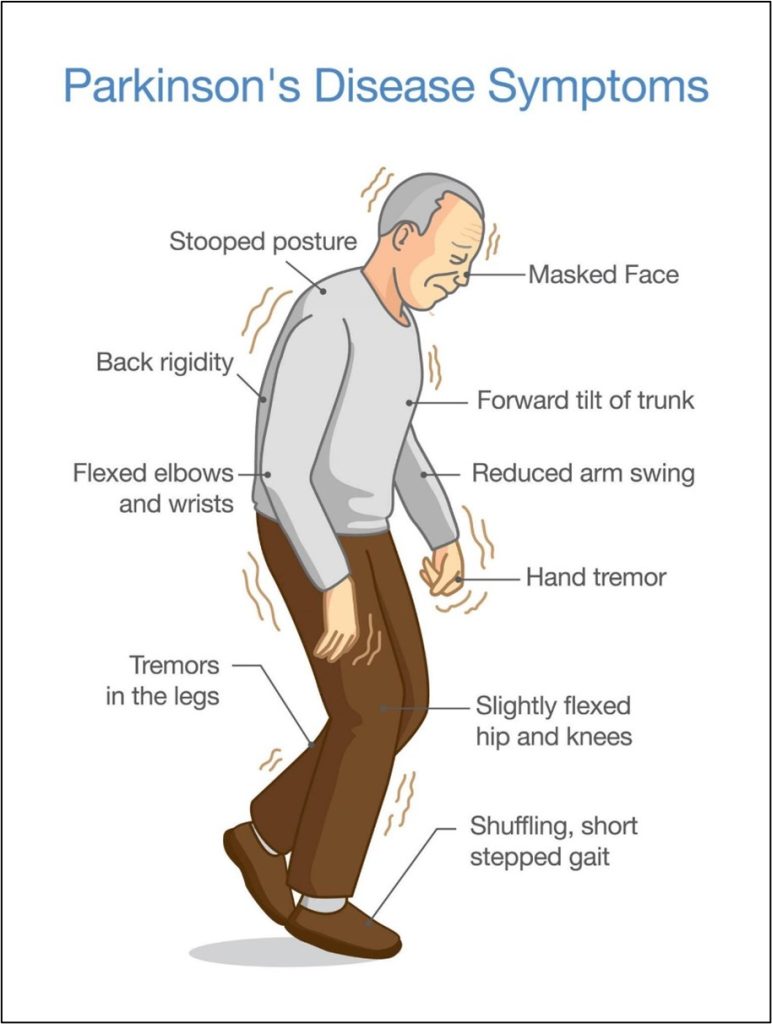
Motor-related symptoms:
- Decreased muscle control and slowed movements, termed as bradykinesia
- A common symptom of constant muscle tremors, even when the body is at rest, contributes to 80% of the PD cases
- Micrographia, a small handwriting due to loss of muscle control
- Dysphagia, a problem with swallowing food leading to choking
- Hypophonia: an abnormally soft and weak voice due to reduced control of speech muscles
- Drooling – swallowing problem of saliva
- Unstable posture
- Frequently blinking
- Constipation
Non-motor symptoms
- Low blood pressure or hypotension
- Frequent constipation
- Sexual dysfunctions
- Depression
- Anosmia, impaired sense of smell
- Chewing and eating problems
- Dementia, impaired ability to think, focus and make decision
- Periodic limb movement disorder (PLMD), in this frequent jerking and cramping of legs, occurs particularly during sleep
Diagnoses of Parkinson’s Disease
There is no proper diagnosis test for Parkinson’s disease. If you are experiencing any symptoms of Parkinson’s disease, your doctor will review your symptoms, ask about your medical history, and recommend some neurological tests.
These tests could be:
- A single photon emission computerized tomography scan is also known as a dopamine transporter scan.
- Genetic testing
- Magnetic resonance imaging (MRI)
- Positron emission tomography (PET) scan
- Lumbar puncture or spinal tap and Skin biopsy
Treatment of Parkinson’s Disease
There are multiple medications and treatment options available for treating Parkinson’s disease.
- Increasing the already available dopamine is an effective approach to alleviating symptoms of Parkinson’s disease. This can be done by giving Levodopa to PD patients. Levodopa enhances dopamine levels and relieves many movement-related symptoms.
- Another approach is treating patients with dopamine agonists. These dopamine agonists stimulate the cells to act and behave like natural dopamine usually does to cells. By this treatment method, muscle cells can function properly; therefore, body movements can occur smoothly.
- Using dopamine metabolism blockers can maintain the readily available dopamine in the body. Usually, dopamine is broken down in the body through natural processes, but dopamine metabolism blockers prevent its breakdown, and dopamine becomes available for the brain. Dopamine metabolism blockers have shown synergistic effects when given with levodopa.
- When levodopa therapy becomes ineffective at later stages of Parkinson’s disease, another treatment is approached, termed as deep-brain stimulation (DBS). In this treatment option, a small electrode is implanted in specific parts of the brain that are responsible for controlling movements. Another device impulse generator battery (IPG) is implanted in the collarbone or abdomen; this impulse generator battery (IPG) produces electrical impulses to a specific part of the brain that controls body movements.
Besides this medicinal treatment, there might be rehabilitation, which includes physiotherapy, which can relieve a Parkinson’s patient. These therapies reduce the strain on cancer and will function the life of Parkinson’s patients properly.
These therapies should be:
- Gait and balance training
- hydrotherapy
Final Thoughts
The WHO report on the prevalence of this illness reveals that almost 10 million people are affected by it. Parkinson’s disease is usually caused by the loss of dopamine-producing cells in the brain—people experience symptoms such as stiffness, tremors, problems in breathing, and others. Parkinson’s disease was first discovered by James Parkinson in 1817.
Frequently Asked Questions – FAQs
Does Parkinson’s disease can cause memory loss?
Yes! When this disease lasts long, it could lead to severe complications such as dementia, which leads to memory loss.
Which aged people are usually affected by this disease?
Normally, It is noted that Parkinson’s disease affects people of more than 50 years.
What is the main cause of Parkinson’s disease?
It is caused by the loss of nerve cells in the brain, which are known as Substantia nigra, and responsible for producing dopamine. That’s why loss of dopamine is considered the main cause of PD.
About the author
Dr Madilyn Adams is a PhD in molecular medicine from Harvard University and has been working as a medical blogger for seven years.
References
- https://www.parkinson.org/understanding-parkinsons/what-is-parkinsons
- https://www.nia.nih.gov/health/parkinsons-disease
- https://www.mayoclinic.org/diseases-conditions/parkinsons-disease/symptoms-causes/syc-20376055#:~:text=Parkinson’s%20disease%20is%20a%20progressive,stiffness%20or%20slowing%20of%20movement.
- https://www.mayoclinic.org/diseases-conditions/parkinsons-disease/symptoms-causes/syc-20376055#:~:text=Parkinson’s%20disease%20is%20a%20progressive,stiffness%20or%20slowing%20of%20movement.
- https://www.aans.org/en/Patients/Neurosurgical-Conditions-and-Treatments/Parkinsons-Disease

